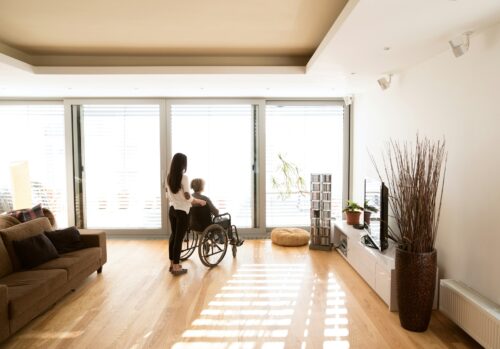Top Residential Ramp Options for Tight Spaces in Ottawa

Making homes accessible is essential for ensuring comfort and independence for everyone, particularly for those using mobility aids. As homes evolve, so does the need for ramps that not only offer accessibility but also fit seamlessly into tighter spaces. Ramps provide a sense of freedom to move about without barriers, especially in densely populated areas like Ottawa. From small urban condos to charming older homes, installing residential ramps has become a practical and necessary consideration for many households.
Ottawa, known for its mix of historic charm and modern living, presents unique challenges when it comes to retrofitting homes with accessibility solutions. The diverse housing styles and varied terrains require thoughtful planning to accommodate ramps in limited spaces. Fortunately, there are numerous ramp options designed to fit snug spaces without compromising functionality or aesthetics. Let’s explore some key factors and options to consider when looking into residential ramps in Ottawa.
Assessing Your Space
Before diving into the specifics of ramp options, it’s important to assess the space you have available at home. Knowing the right measurements and angles is vital for a successful installation. Begin by identifying the key areas where a ramp might be needed, such as the main entrance, patio door, or garage.
When measuring:
– Length and Width: Measure the space where the ramp will be placed, ensuring there is enough room for a steady and gentle slope. Accessibility guidelines suggest that for every inch of rise, there should be at least 12 inches of ramp length.
– Height: Confirm the height difference you need to overcome, like steps or thresholds.
– Landing Space: Plan for sufficient landing areas at the top and bottom of the ramp to ensure safe movement into and out of the house.
Once you’ve got the basics of measurement down, consider other factors like weather exposure, surface conditions, and daily use patterns. This helps in deciding the location and type of ramp best suited to your needs.
With your space assessed, you’re ready to decide on the best ramp option. Several solutions make it easy to add accessibility even where space is constrained. Portable ramps, for instance, are fantastic for flexibility and can be moved as needed. Meanwhile, threshold ramps help smooth over small steps or uneven surfaces, providing a safe passage.
In choosing the perfect ramp, ensure it not only meets the physical requirements but also integrates into your exterior or interior seamlessly. From sleek designs that enhance your home’s aesthetic to durable material that ensures longevity, the right ramp solution can make all the difference in maintaining accessibility without altering the beauty and functionality of your home.
Types of Ramps for Tight Spaces
Choosing the right type of ramp for tight spaces requires understanding the specific requirements and advantages each option offers. Portable ramps, for example, provide flexibility and are easy to move around as needed. They’re particularly useful in homes where permanent installations might not be feasible. These ramps can also be stored when not in use, making them a great choice for spaces that see occasional need for accessibility enhancements.
Threshold ramps serve a different purpose. They’re designed to bridge small steps or uneven surfaces, providing a gentle transition without the need for a larger structure. Threshold ramps are compact and can be installed easily at doorways, serving as a simple yet effective solution for daily movement across small barriers.
Folding ramps offer benefits in storage and convenience, as they can be folded away when not in use. This type of ramp is ideal for those who need an accessible solution that doesn’t permanently alter the living space. They are often lightweight, yet sturdy, making them excellent choices for homes with limited space.
Materials and Design Considerations
The choice of materials plays a significant role in ramp functionality and aesthetics. Aluminum ramps are lightweight yet durable, making them easy to handle while being resilient against the elements. They’re a popular choice for those who need an all-weather option without the maintenance demands of other materials.
Wood ramps, while heavier, provide a natural look that can blend well with home exteriors, especially for gardens and porch areas. They’re strong and can be treated for weather resistance, but may require more upkeep over time.
Rubber ramps are another excellent option for smaller height adjustments. They’re often used indoors for threshold applications due to their non-slip surface, safety, and durability. Rubber ramps are also easy to clean and can withstand outdoor conditions with ease.
Design considerations include customizing the ramp to match your home’s aesthetic. This might involve choosing a colour that complements your exterior or selecting a design that harmonizes with the overall layout of your space. A custom ramp ensures not just functionality but a seamless integration into your home’s look and feel.
Installation Tips and Professional Help
While some ramp types may seem easy to install, seeking professional help ensures that the ramp is safe and secure. A professional can assess your specific needs and help with any unique challenges your home may present. This is particularly important for custom or permanent installations, where precise measurements and sturdy construction are paramount.
Professionals offer the expertise needed to navigate tricky aspects like weather proofing, ensuring proper slope, and accurately fitting the ramp into irregular spaces. They can also suggest enhancements and make sure every detail aligns with safety standards and best practices for accessibility.
Making the Most of Small Spaces
In cities like Ottawa, where space can be at a premium, creative strategies are necessary to incorporate ramps without compromising style or function. Consider the use of sleek, modern designs that add value to your space without overwhelming it. For example, built-in ramps can work wonders for multi-level homes, turning what could be a cumbersome add-on into an aesthetically pleasing feature.
Successful installations often involve integrating ramp needs seamlessly with the rest of the home. For small backyards or patios, integrating ramps into garden paths can create an appealing flow while maintaining accessibility. An example of this would be a discreetly designed ramp that follows the natural curve of a garden path, providing grace and functionality.
Enjoying Increased Mobility in Your Ottawa Home
As we’ve explored, ramps are not just practical necessities; they’re opportunities to enhance the comfort and accessibility of your home. With the right ramp choice, you can transform your living space into one that reflects your style while meeting all mobility needs.
By thoroughly assessing your space, selecting the appropriate ramp type, and considering materials and design, you can create an environment that welcomes everyone. Remember, the goal is to blend functionality with aesthetics, ensuring your home remains both accessible and beautiful.
Transform your Ottawa home with ramps that combine style and functionality. At Regional Ramp, we specialize in providing a seamless blend of aesthetics and accessibility with options like wheelchair ramp installation. Whether your space is large or limited, we’re here to help craft the perfect solution for your mobility needs. Enhance the freedom and flow of your home with our expert guidance and innovative designs.

